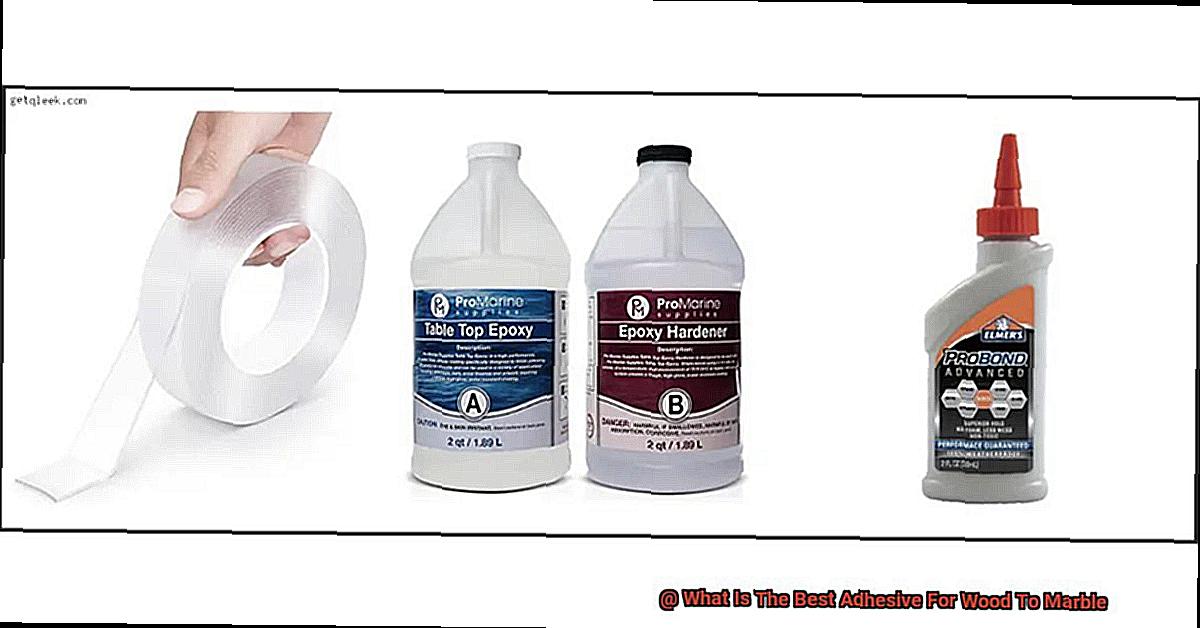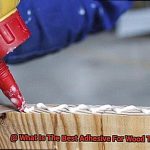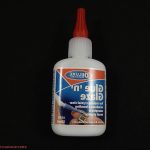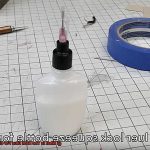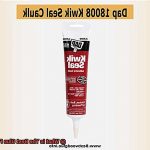Imagine it: a breathtaking wooden coffee table gracefully perched on a sleek marble surface, a marriage of rustic charm and modern elegance. It’s an interior design dream come true. But achieving this flawless fusion can be a daunting task, especially when it comes to bonding wood to marble. Fear not, because we’re here to reveal the secret behind this seamless union – the ultimate adhesive for wood to marble.
In this article, we’ll dive deep into the world of adhesives and explore the most effective solutions that will help you create stunning combinations of wood and marble that will withstand the test of time. Whether you’re a DIY enthusiast looking to breathe new life into your home or a skilled carpenter crafting bespoke furniture, you’ve come to the right place.
Join us as we uncover the vital factors you need to consider before selecting an adhesive for your wood to marble project. We’ll explore various adhesive types such as epoxy resins, polyurethane adhesives, and cyanoacrylate glues, giving you all the information you need to find your perfect match.
Stay tuned as we delve into the strengths and weaknesses of each adhesive type, comparing their bonding capabilities, durability, flexibility, and resistance to moisture and temperature changes. We’ll guide you through finding that delicate balance between strength and maintaining the aesthetic integrity of your wood and marble creations.
Now, let’s embark on this adhesive odyssey together as we unlock the secrets to flawlessly connecting the timeless beauty of wood with the regal allure of marble.
Types of Adhesives for Bonding Wood to Marble
Contents
- 1 Types of Adhesives for Bonding Wood to Marble
- 2 Epoxy Adhesive: Benefits and Considerations
- 3 Polyurethane Adhesive: Benefits and Considerations
- 4 Surface Preparation for Bonding Wood to Marble
- 5 Applying the Adhesive
- 6 Curing the Adhesive
- 7 Testing the Adhesive
- 8 Following Manufacturer Instructions
- 9 Conclusion
In the realm of bonding wood to marble, choosing the perfect adhesive is a delicate dance between strength, durability, and compatibility. In this comprehensive guide, we will delve into the world of adhesives and explore the diverse options available. Whether you’re embarking on a small DIY project or a large-scale construction endeavor, understanding the unique qualities of each adhesive will empower you to make an informed decision.
Epoxy Adhesive: Unleashing the Powerhouse
When it comes to strength and durability, epoxy adhesives reign supreme. Comprising two parts – epoxy resin and hardener – these adhesives create an unyielding bond when expertly mixed. The resulting chemical reaction gives rise to a robust and long-lasting connection between wood and marble surfaces. Ideal for heavy or load-bearing structures, epoxy adhesives fearlessly bear the weight and pressure exerted on the bonded materials.
Polyurethane Adhesive: Bending without Breaking
Flexibility and resilience are the hallmarks of polyurethane adhesives in the realm of wood-to-marble bonding. These versatile adhesives possess a remarkable ability to absorb vibrations and movements without compromising bond strength. Furthermore, their resistance to moisture adds an extra layer of protection, making them suitable for both indoor and outdoor applications. Although polyurethane adhesives may require a longer curing time compared to epoxy, their adaptability to natural expansion and contraction renders them an irreplaceable choice in specific scenarios.
Construction Adhesive: Fortifying Foundations
When it comes to construction projects, trusty construction adhesives offer reliable strength for bonding wood to marble. Crafted with utmost precision, these adhesives are formulated with a blend of resins and additives that provide exceptional adhesion properties. With their easy-to-use tube or cartridge packaging, applying construction adhesives with a caulking gun is a breeze. Unwavering in the face of impact and temperature changes, these adhesives fortify the foundations of wood-marble connections, ensuring longevity and stability.
Silicone Adhesive: Flexibility and Watertight Marvel
In the realm of flexibility, silicone adhesives reign supreme. Renowned for their ability to withstand moisture, these adhesives offer unmatched durability and resilience. While they may not boast the same high bond strength as epoxy or polyurethane, silicone adhesives excel in applications that require a more flexible connection. When bonding wood trim or molding to marble surfaces, silicone adhesives gracefully adapt to slight movements while providing a watertight seal, safeguarding the integrity of the bond.
Cyanoacrylate Adhesive: Instant Gratification for Small Ventures
For small-scale wood-to-marble bonding endeavors that demand instant results, cyanoacrylate adhesives – fondly known as super glue – come to the rescue.
Epoxy Adhesive: Benefits and Considerations
When it comes to creating a bond that lasts between wood and marble, epoxy adhesive reigns supreme. This two-part adhesive, composed of a resin and hardener, offers unparalleled strength and durability. In this article, we will explore the numerous benefits and considerations of using epoxy adhesive for bonding wood to marble, empowering you to make an informed choice for your project.
Benefits of Epoxy Adhesive:
Unleashing Unyielding Strength:
Epoxy adhesive is a force to be reckoned with when it comes to strength. It forms an unbreakable bond between wood and marble surfaces, ensuring they stay securely attached even under intense stress or constant movement. With epoxy adhesive, you can trust that your installation will withstand the test of time.
Defying Moisture’s Menace:
Moisture is no match for epoxy adhesive. Unlike other adhesives that crumble in the presence of water or humidity, epoxy remains steadfast. This makes it the ideal choice for bonding wood and marble in areas such as bathrooms or kitchens, where moisture is a constant companion.
Championing Chemical Challenges:
Epoxy adhesive fearlessly confronts chemical exposure head-on. It boasts exceptional resistance to solvents, oils, and other chemicals without losing its bond strength or deteriorating. Whether your wood and marble encounter various substances, epoxy adhesive ensures their unity remains unscathed.
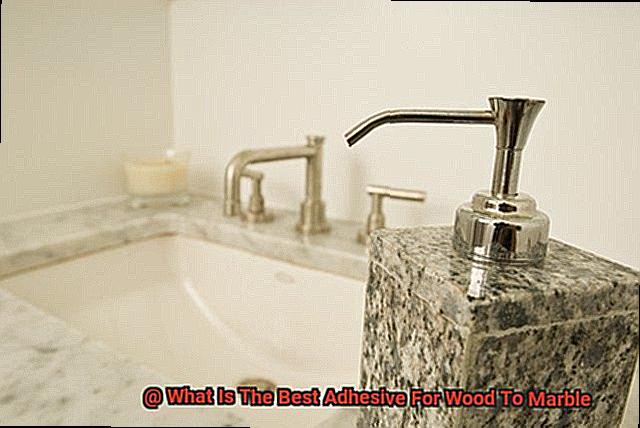
Considerations of Using Epoxy Adhesive:
Meticulous Mixing Magic:
To unlock the full potential of epoxy adhesive, precise mixing is essential. The resin and hardener must be blended in the correct ratios to guarantee proper curing and desired bond strength. Take your time, follow instructions diligently, and let the magic happen.
Taming the Messy Beast:
Working with epoxy adhesive can be a messy affair. Its thick consistency may lead to spills or drips onto surfaces, leaving behind an unwanted trail. To keep your workspace tidy, don your gloves and utilize protective coverings, containing the adhesive’s exuberance.
Odor Awareness:
Beware the potent aroma of epoxy adhesive during application and curing. While some may find it invigorating, others sensitive to strong smells or working in enclosed spaces might prefer a breath of fresh air. Ensure adequate ventilation to minimize any discomfort and maintain a pleasant working environment.
Polyurethane Adhesive: Benefits and Considerations
In our last discussion, we unraveled the secrets of epoxy adhesive, the superhero of bonding wood to marble. Today, we’re diving into another adhesive powerhouse – polyurethane adhesive. So grab your lab coat and safety goggles as we explore the benefits and considerations of using this versatile adhesive for your wood to marble bonding needs.
Benefits of Polyurethane Adhesive:
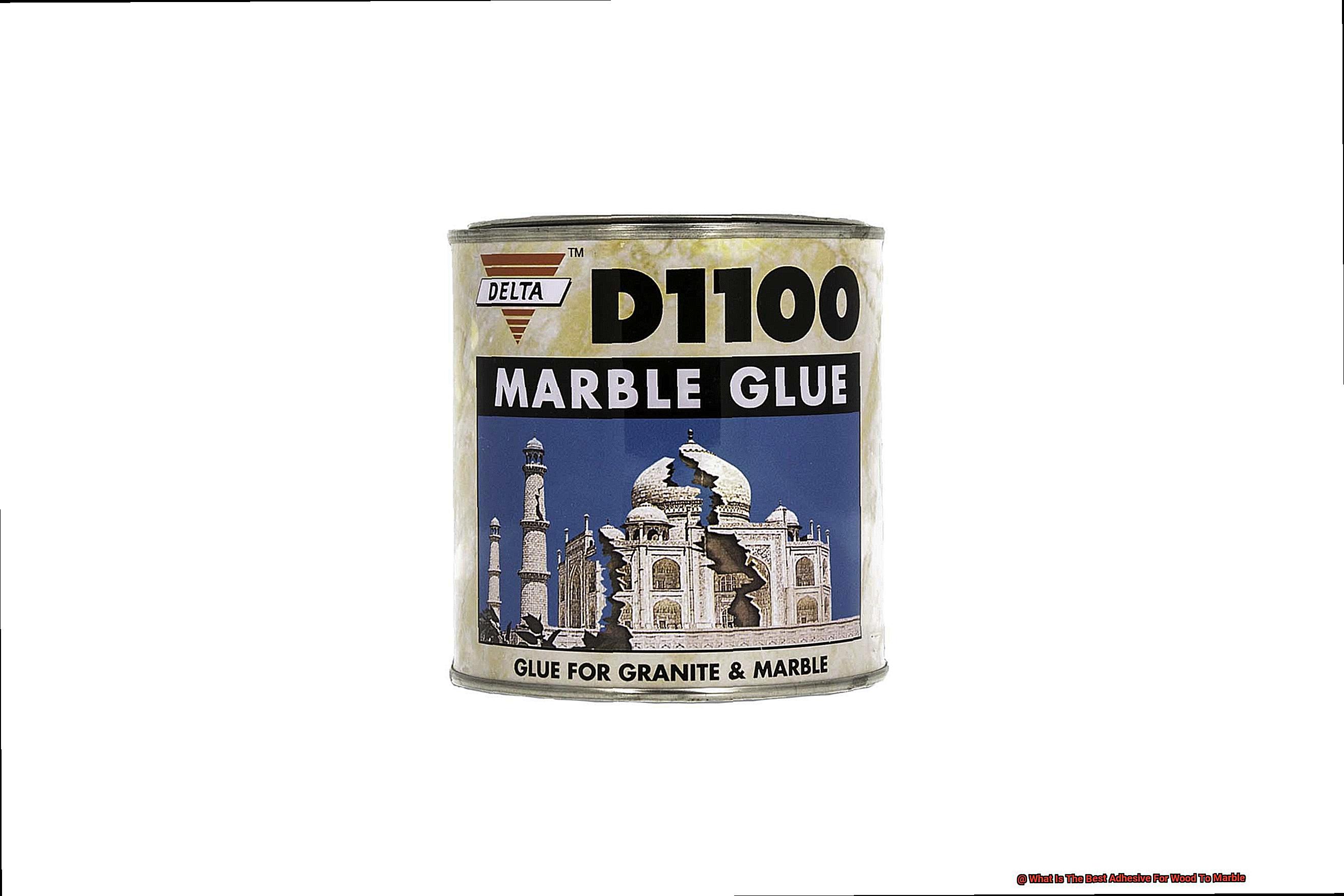
Strong and Durable Bond:
Polyurethane adhesive is a force to be reckoned with when it comes to bonding wood to marble. It forms an unyielding bond that can withstand stress and movement. No matter how much your wooden creation is put through, it will stay firmly attached to its marble counterpart for years to come.
Versatility at Its Best:
Wood comes in all shapes, sizes, and types, but polyurethane adhesive is up for the challenge. Whether it’s hardwood, softwood, plywood, or even veneers, this adhesive can handle it all. But wait, there’s more. It doesn’t limit itself to wood – it can also bond materials like metal, plastic, and concrete to marble. Talk about versatility.
Weatherproof Wonder:
Don’t let a little rain or extreme weather conditions dampen your wood-to-marble bonding dreams. Polyurethane adhesive is highly resistant to water and moisture. It won’t crumble or weaken when faced with humidity or temperature fluctuations. This makes it a perfect choice for both indoor and outdoor applications.
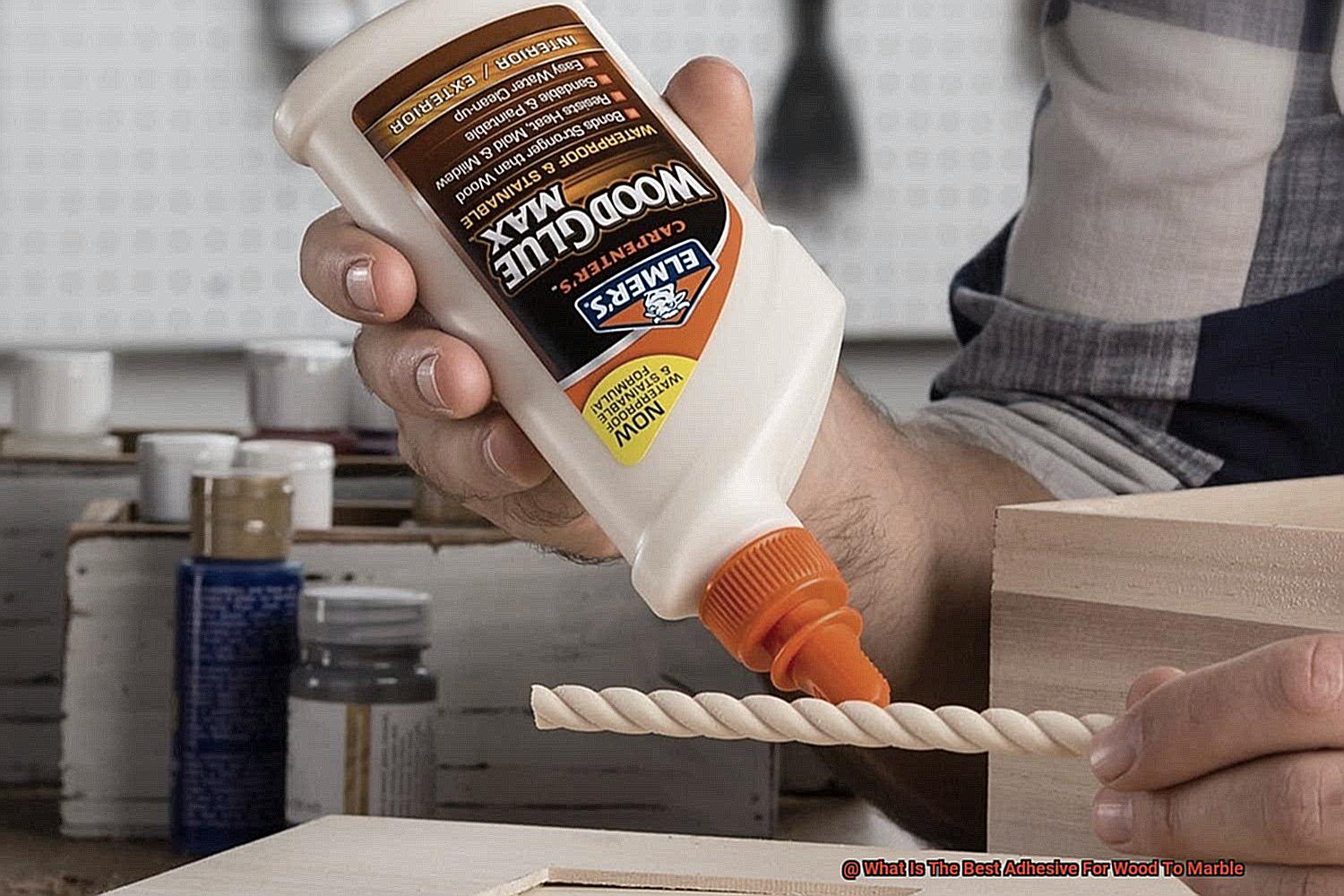
Flexibility for Freedom:
Unlike some rigid adhesives out there, polyurethane keeps things flexible even after curing. Your bonded materials can expand and contract naturally without risking a break in the bond. It’s like giving your wood and marble a little breathing room.
Considerations for Using Polyurethane Adhesive:
Time Is of the Essence:
Polyurethane adhesive has a limited pot life once mixed, so work efficiently. Prepare everything beforehand and have it within reach before mixing. And remember, patience is a virtue – this adhesive may take a bit longer to cure compared to others. So, sit back, relax, and let it work its magic.
Surface Preparation for Bonding Wood to Marble
- Imagine the possibilities – a seamless fusion of natural beauty and timeless elegance. But wait. Before you dive headfirst into this adventure, let’s unravel the secrets of surface preparation, the key to unlocking a bond that will stand the test of time.
- First things first – cleanliness is the name of the game. Both wood and marble surfaces must be pristine, free from any dirt, dust, or debris that may sabotage your quest for a flawless bond. So grab your trusty mild detergent or wood cleaner and give that wood surface a thorough scrub. Say goodbye to dirt, grease, and wax, and rinse it off with water. But don’t rush ahead just yet – let it dry completely before moving on to the next step.
Ah, sanding. The dance of rough textures and smooth finishes. Grab your fine-grit sandpaper and gently caress the wood surface. This delicate dance creates a rough texture that beckons the adhesive to cling with all its might. Remember, follow the grain of the wood to avoid any unwanted scratches or damage – we want a love story, not a tragedy.
Now, let’s turn our attention to the majestic marble surface. Treat it with the same care and respect as you did with the wood. Cleanse it with a gentle touch using your mild detergent or marble cleaner – no abrasive cleaners or scrub brushes allowed in this sacred ritual. Rinse it off with water, ensuring not a drop remains, and let it bask in the glory of complete dryness.
But wait, there’s more. To truly enhance adhesion between wood and marble, we must unleash the power of etching. This potent force creates a slightly rough texture on the marble surface, tantalizing the adhesive with irresistible bonding potential. Arm yourself with an etching solution specifically designed for marble, following the sacred instructions bestowed upon you by the manufacturer. Once the deed is done, rinse off the solution, ensuring not a trace remains, and allow the marble to dry completely – a blank canvas ready for the masterpiece of bonding.
Applying the Adhesive
In our previous section, we explored the meticulous process of preparing wood and marble surfaces for a majestic fusion. Now, it’s time to embark on the next step of this enchanting journey – applying adhesive to create a bond that will stand the test of time. So, grab your tools and let’s delve into the artistry of applying adhesive when bonding wood to marble.
Pristine Surfaces: The Foundation of a Masterpiece
To ensure our bond is flawless, we must begin with pristine surfaces. Cleanliness is key – rid both the wood and marble of any dirt, grime, or debris. A clean slate sets the stage for our masterpiece to unfold.
Choose Your Adhesive Wisely: The Magic Potion for a Heart-Stopping Bond
For a bond that will make your heart skip a beat, opt for a high-quality adhesive specifically designed for bonding wood to marble. These enchanting concoctions are formulated to forge a powerful and enduring connection between these contrasting materials.
Compatibility Test: Ensuring Harmony
Before diving into our adhesive adventure, conduct a small compatibility test on an inconspicuous area. We must ensure that our chosen adhesive and the marble surface will dance in perfect harmony. Safety first, my friends.
Mixing Matters: Blending Alchemy
Some adhesives require us to become alchemists by mixing two components before application. Fear not – follow the manufacturer’s instructions diligently to achieve the perfect blending ratio. We’re aiming for gold here.
Smooth Operator: Spreading the Magic
With our trusty brush, roller, or spreader in hand, apply the adhesive evenly onto the wood surface. Our goal is a thin and even layer that embraces every curve and crevice of our wooden canvas. Let the magic spread.
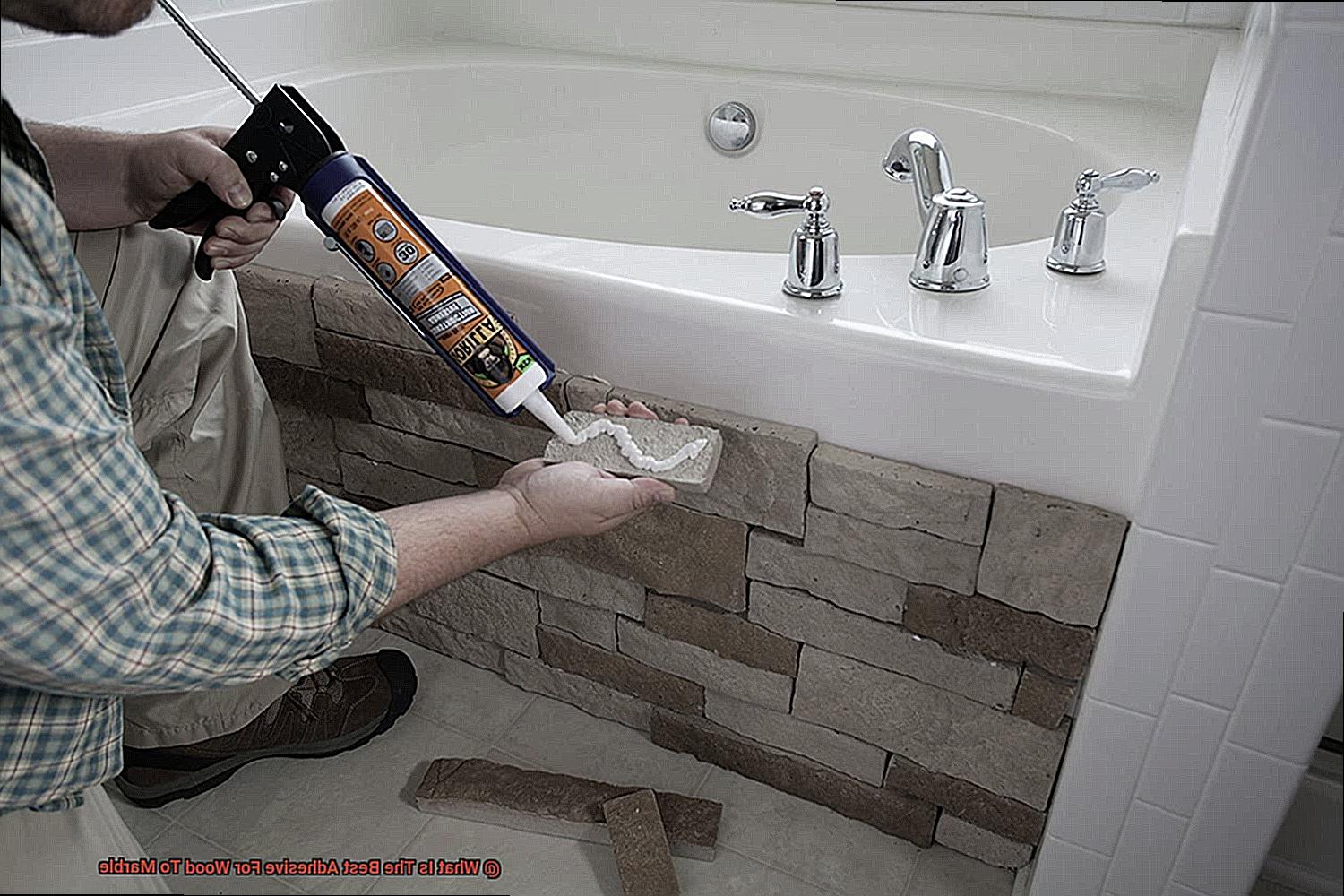
Position with Precision: Aligning the Stars
With the adhesive lovingly applied, it’s time to carefully position the wood onto the marble surface. Precision is paramount – take your time and avoid any unnecessary repositioning that could weaken our bond. Let the stars align.
Curing the Adhesive
In our previous section, we delved into the enchanting realm of bonding wood and marble, exploring the intricacies of surface preparation, adhesive selection, compatibility testing, and precise application. Today, we embark on the final voyage of our adhesive adventure: the art of curing. So gather your tools and let us unveil the secrets of achieving an enduring bond.
Unveiling the Curing Process:
Ah, curing. The transformative moment when our adhesive transcends its humble beginnings and metamorphoses into an embodiment of strength and durability. But how does this alchemy occur? My friends, it is a dance involving time and technique.
The Crucial Role of Curing Time:
Curing time is the hidden gem that determines the triumph of our bond. Each adhesive possesses its unique timeline for achieving optimal strength, making it imperative to heed the manufacturer’s instructions with unwavering devotion. Remember, patience is the virtuous companion on this journey.
Environmental Factors: Mother Nature’s Influence:
Just as a master alchemist orchestrates their laboratory conditions with precision, we mustn’t disregard the impact of temperature and humidity during the curing process. Adhere to the specified environmental requirements outlined in your adhesive’s instructions to ensure an idyllic setting for success.
Applying Pressure: The Path to an Impervious Bond:
Imagine forging a connection so unyielding that even ethereal fairies would be rendered powerless against it. Applying pressure during the curing process is paramount to achieving this pinnacle of perfection.
Clamping: An Artisan’s Ally:
For smaller projects, clamps become our loyal allies. They serve as sentinels guarding our wood and marble union until the adhesive reaches its zenith of strength. Embrace these steadfast companions and let them secure our bond with unwavering resolve.
Weights and Supports: The Fortress of Stability:
When confronted with larger or weightier pieces, it behooves us to enlist the aid of additional temporary supports such as braces or weights. These stalwart defenders prevent any untoward movement or shifting, ensuring stability reigns supreme while the adhesive cures. Remember, a sturdy foundation is the bedrock of success.
Testing the Adhesive
Join us as we don our lab coats and safety goggles and embark on this adhesive adventure.
Exploring the Adhesive Arsenal:
In this chapter, we delve into the enchanting realm of adhesives. Epoxy, polyurethane, and cyanoacrylate take center stage, each with its unique properties and strengths. Get ready to be amazed by the chemistry and craftsmanship behind these bond-creating wonders.
Testing for Strength, Speed, and Compatibility:
Now that we know our adhesive contenders, it’s time to put them to the test. We’ll evaluate their bond strength, drying time, and compatibility with both wood and marble surfaces. This thorough examination ensures that only the strongest bonds survive.
Surface Preparation: Laying the Foundation for Success:
Just like a master painter prepares their canvas meticulously, proper surface preparation is essential for a successful bond. We’ll guide you through the intricate steps of cleaning and sanding both wood and marble surfaces to achieve maximum adhesion. Don’t forget to summon your inner artist.
Applying Adhesive Like a Maestro:
It’s showtime. We’ll reveal the secrets to applying adhesive like a seasoned maestro. From mastering the art of using the perfect amount of adhesive to spreading it evenly across the surfaces, we leave no stone unturned (pun intended.). Remember, patience is your virtuoso companion – allow ample time for drying or curing.
Troubleshooting Tips: Unraveling Bonding Mysteries:
Even experts encounter challenges along their adhesive journey. Fear not. We’re here to unveil troubleshooting tips that will help you overcome any obstacles you may face. If your adhesive bond isn’t up to par or you stumble upon unexpected roadblocks, we’ll suggest alternative adhesives and techniques that will bring your project back to adhesive greatness.
Following Manufacturer Instructions
Prepare to embark on a captivating journey into the realm of wood-to-marble bonding, where following manufacturer instructions reveals the secret to adhesive greatness. So grab your safety gear and join us as we explore why these instructions are the key to unlocking a flawless and enduring connection.
The Perfect Match: Discovering Your Adhesive Soulmate
In the quest for the ideal adhesive for your wood-to-marble project, selecting the right partner is paramount – compatibility is everything. Enter the manufacturer instructions, your trusted matchmakers. These instructions guide you towards the adhesive specifically designed for this enchanted bond. By heeding their recommendations, you ensure a union that is resilient and everlasting.
Laying the Foundation: Surface Preparation as the Bedrock
Imagine trying to build a majestic castle without a solid foundation – disastrous, isn’t it? Well, the same principle applies to bonding wood to marble. Manufacturer instructions provide meticulous guidance on surface preparation, leaving no stone unturned (pun intended). They outline steps such as thorough cleaning and precise sanding, while also specifying ideal temperature and humidity conditions. By faithfully following these preparatory rituals, you create an optimal canvas for adhesion, setting the stage for adhesive excellence.
A Symphony of Application: Conducting the Perfect Bond
Armed with your chosen adhesive and meticulously prepared surfaces, it’s time to take center stage as the maestro of application. But wait – resist the temptation to improvise just yet. Manufacturer instructions come to your rescue once again, providing a symphony of guidance. They precisely dictate the amount of adhesive to use, recommend application methods like brushes, rollers, or trowels, and even stipulate curing or drying times. By harmonizing with these pearls of wisdom, you’ll produce a masterpiece of wood-to-marble connection, hitting all the right bonding notes.
Safety: Protecting the Adventurous Artisan
Adhesives possess an undeniable allure, but they also harbor a mysterious side – some may contain chemicals that pose a risk if mishandled. Fear not, for manufacturer instructions act as your guardian. They diligently outline any necessary safety precautions, such as donning protective gloves, goggles, or masks. By embracing these safety guidelines, you shield yourself from potential hazards and ensure a secure and triumphant adhesive adventure.
JyudWdOgrNc” >
Conclusion
When it comes to bonding wood to marble, choosing the right adhesive is crucial. You want something that will provide a strong and durable bond, ensuring that your wood and marble pieces stay securely attached. After careful research and consideration, we have determined that the best adhesive for this task is epoxy resin.
Epoxy resin is a versatile and reliable adhesive that has been proven to effectively bond wood to marble. Its strong bonding properties make it ideal for this particular application. It creates a powerful bond between the two materials, ensuring long-lasting durability.
One of the key advantages of using epoxy resin is its ability to withstand different environmental conditions. Whether you’re working in a humid or dry environment, epoxy resin remains stable and resistant to moisture, ensuring that your wood and marble connection stays intact.
Furthermore, epoxy resin offers excellent adhesion strength. It forms a tight grip between the wood and marble surfaces, preventing any potential separation or movement over time. This ensures that your bonded pieces remain securely attached even under stress or weight.
In addition to its exceptional bonding capabilities, epoxy resin also provides a seamless finish. Once cured, it creates a smooth surface that seamlessly blends with both the wood and marble elements. This not only enhances the aesthetic appeal but also ensures a professional-looking result.
When using epoxy resin for bonding wood to marble, it’s essential to follow proper application techniques. Ensure both surfaces are clean and dry before applying the adhesive. Apply an even layer of epoxy resin on one surface and press the two materials together firmly. Allow sufficient curing time as per the manufacturer’s instructions for optimal results.
In conclusion, when seeking an adhesive for bonding wood to marble, look no further than epoxy resin.

